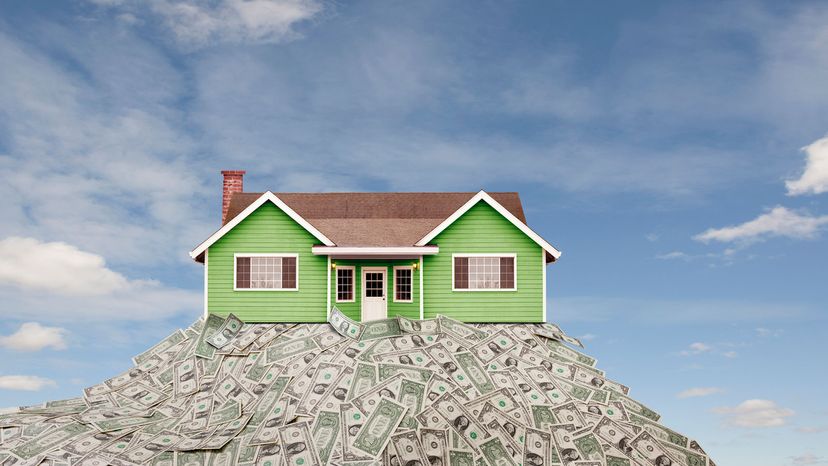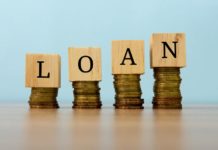 “You can take out the equity in your home and use for just about anything with a cash-out mortgage refinance. John M Lund Photography Inc/Getty Images
“You can take out the equity in your home and use for just about anything with a cash-out mortgage refinance. John M Lund Photography Inc/Getty Images
Homeowners often refinance their mortgages when interest rates fall to reduce their mortgage payments and lighten the monthly bill load. But there’s a twist on this called cash-out mortgage refinancing where the homeowner refinances the property for an amount larger than their mortgage’s remaining balance in order to get some cold hard cash that can be used for other things.
"It’s a way to access the equity in your home to do whatever you please," says Tony Garcia, a Los Angeles-based market manager for Wells Fargo Home Mortgage. "A very high percentage of customers are pulling that cash out and using it for various reasons." Indeed, the percentage of "cash-out" borrowers, who had increased their loan balance by at least 5 percent, made up 82 percent of all refinance loans in fourth quarter 2018, according to Freddie Mac. This was the highest percentage since 2006, the heyday of the housing bubble.
So, how does this work? You probably know that home equity is the value a homeowner actually has in a property (the current market value minus any liens). So, if your home is worth $500,000, but you only owe $100,000 on the loan that means you have $400,000 in equity. A homeowner in this situation who pursues a cash-out mortgage refinance can opt to pull some of that equity to take care of other financial business, like consolidating debts, paying off student loans, sending kids to college, funding a wedding, renovating a kitchen or whatever else strikes their fancy.
Although cash-out refinance is a slam-dunk scenario for many, it doesn’t come without some caveats. We talked to Michelle McLellan, senior vice president and product management executive of home loans at Bank of America to get her take on the pros and cons of cash-out mortgage refinance.
Pros of Cash-out Mortgage Refinancing
No Need to Move: Got bills, but don’t want to change addresses? "Cash-out refinancing allows you to access a large chunk of money without selling your home," McLellan says. Everyone who hates packing and unpacking can just start high-fiving each other right now.
May Be Cheaper Than Other Financing Options: The cash-out scenario is ideal for many since home interest rates are at near-record lows, so it’s cheaper to meet these short-term cash needs via a cash-out refi than it is to rack up credit card bills or take out a separate higher-interest loan.
Let’s say your home is worth $400,000 and you owe $200,000; that leaves $200,000 as sweet, sweet equity. "With cash-out refinancing, you could receive a portion of this equity in cash. If you take out $50,000 in cash, this amount would be added to the principal of your new mortgage, which would be $250,000 after the cash-out refinance," she says. "While the cash you take out will cost you more in interest over the life of your new loan, it won’t necessarily cost you more than other financing options."
Only One Loan: Although the cash-out refinancing may sound similar to a traditional home equity loan, where you borrow against the equity in your home, the biggest difference is that with the latter, you essentially take out a second mortgage, so you now have two loans. Conversely, the cash-out refinancing option is just one loan. And interest rates are generally lower with this option than with a home equity loan.
But using a cash-out refinance has some drawbacks too.
Cons of Cash-out Mortgage Refinance
Additional Closing Costs: Closing costs can be a pretty tough pill to swallow, as they’re usually 2 to 5 percent of the home’s purchase price. Cash-out refinances incur closing costs similar to those found with the original mortgage (loan application fee, home appraisal fee, etc.), McLellan says, unlike taking out a home equity line of credit (HELOC), which has its own unique set of pros and cons. Fees vary by lender, so just as you would with your original loan, you’d want to shop around for a mortgage lender.
Limit to Amount You Can Borrow: You can’t cash out your entire equity. Most banks and the Federal Housing Administration (FHA) won’t lend you more than 80 percent of your home’s current value. This is called the loan-to-value ratio. So, if your home is worth $400,000, and you have $200,000 in equity, your loan-to-value ratio is 50 percent. The most you could borrow would be $120,000 (80 percent of $400,000 minus the outstanding loan balance of $200,000.)
To be fair, the limits imposed on cash-out refinances are largely for the homeowner’s own good. "Cash-out refinancing normally has tighter credit parameters, and most lenders place a cap on the percentage of loan-to-value that you can borrow," McLellan says. "This ensures you still have some equity in your home."
Higher Interest Rates: The interest rate for a cash-out refinance may be higher than for a straight mortgage refinance. This is because the lender may perceive more risk with this kind of refinance — for instance, the borrower may be more likely to walk away from the loan if he’s already cashed out the equity in his home. Of course, a lot depends on the credit rating of the borrower, how much equity is being taken out and market factors.
Mortgage Repayment Period Extends: "It’s common to refinance into another mortgage of the same term, typically another 30-year mortgage," McLellan says. "That means you’d be restarting another 30-year mortgage after you’ve already owned your home for a number of years. As a result, you’ll probably pay more in interest over the life of the loan." So, if you were near the end of paying off your mortgage, you’d probably not want to start all over again.
Now That’s Helpful
Curious about cash-out refinance, but not sure if it’s for you? Check out a cash-out refinance calculator to get a better idea of how this option fits your needs.
































